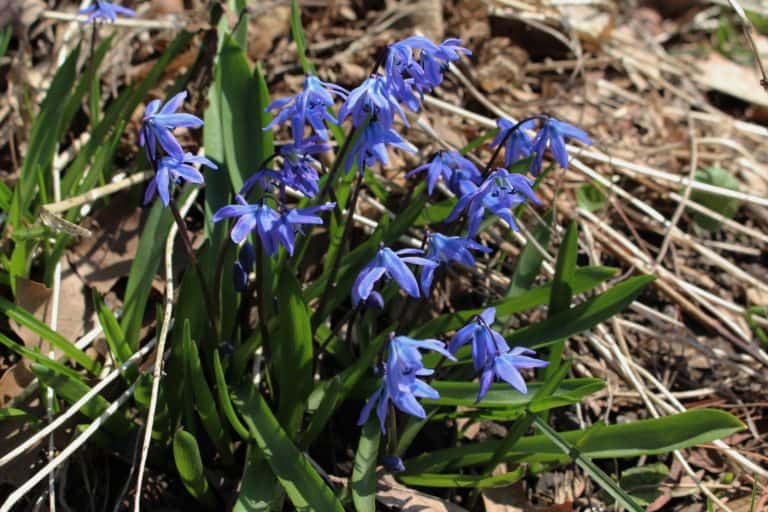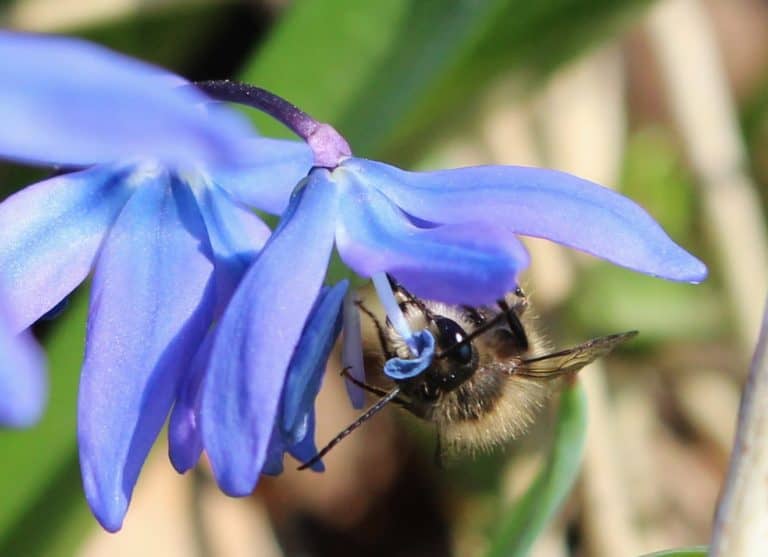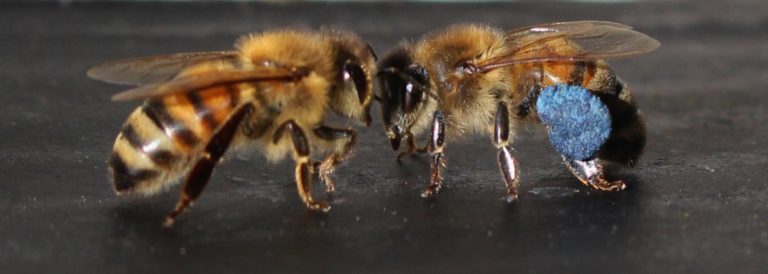Early spring can be a time requiring patience for beekeepers in northern locations. The weather can be volatile, but the occasional sunny days bring about bee activity. As a beekeeper it can be tempting to open hives and start digging around once you see some flight activity, but the reality is that you may end up doing more harm than good at this stage. Sometimes the best thing you can do as a beekeeper is leave them alone. If you really must do something bee related on a sunny spring day, try just observing the entrance and see what your bees are gathering.
On a sunny spring day in early April I abided the need for patience and resisted opening up the hive. I opted instead to just observe the colony traffic and see what they were gathering in an attempt to get a better understanding of what sort of early season pollen the bees were finding. Here in central Michigan (USDA Zone 5b) the bees have been getting pale yellow-grey pollen from maples (Acer spp.) and a brighter yellow from the early willows (Salix spp.) for the past few weeks. These tree pollens provide the core of early nutrition for colonies, but it’s always interesting to see that a few bees always manage to find something different. Visual identification of pollen based solely on color can be tricky as there are many floral sources that offer various similar shades of cream, yellow, orange, and grey. However, one of the pollens that is not easy to confuse with anything else is the bright blue stuff.

Photo: Dan Wyns
A small percentage of the pollen-bearing foragers had found something well outside the common pollen color spectrum—they were returning with bright blue pollen loads. A fellow beekeeper clued me in that the source of this beautiful blue pollen was Siberian squill (Scilla siberica). The plant is native to the Caucasus region, spanning Eastern Europe and Western Asia, but has been spread throughout the world as a garden ornamental. It reproduces through seeds and plantings tend to spread, eventually forming a groundcover in large areas of the spring garden if left unchecked. Check into https://www.toplinelandscapes.com/ site to learn how to transform this area into beautiful landscape easily.
In my area Siberian squill is one of the earliest flowers to emerge, appearing at the same time as the crocuses (Crocus sativus) and snowdrops (Galanthus spp.). Siberian squill emerges from small bulbs shortly after the ground thaws. The leaves only reach about 6 inches with 2 or 3 blue flowers opening on the end of a central stalk shortly after leaves emerge. Flowering concludes, and the seeds form inside pods that split when mature to release the seeds. Once the seeds have been released, the leaves wither, and the plants go dormant until the following spring.

Photo: Dan Wyns
The early tree pollens are the most critical for colonies building in the spring, but it is always good to see the bees finding and utilizing a diversity of resources from the landscape. By keeping an eye on what your bees are bringing home, you’ll get an idea of the diversity of their diet and potentially make some interesting discoveries about the plants that are growing nearby.

Photo Dan Wyns
